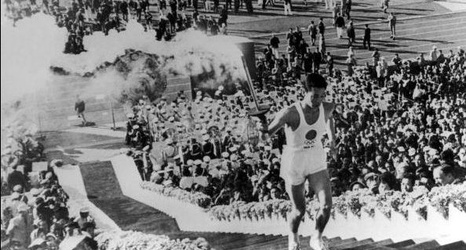TOKYO (AP) — Mariko Nagai walked outside Yoyogi National Stadium — the late-architect Kenzo Tange‘s masterpiece from Tokyo’s 1964 Olympics — and pictured the city in that era.
She was a university student from northern Japan who landed a job as an interpreter at the dazzling swimming venue, where American Don Schollander would win four gold medals.
“I wouldn’t say Japanese people were confident about the ability to become one of the advanced nations,” Nagai said. “But we wanted to show how much recovery we had made.”
Tange’s jewel, with a soaring roofline that still defines modern architecture, symbolized Japan’s revival just 19 years after the ravages of World War II.
